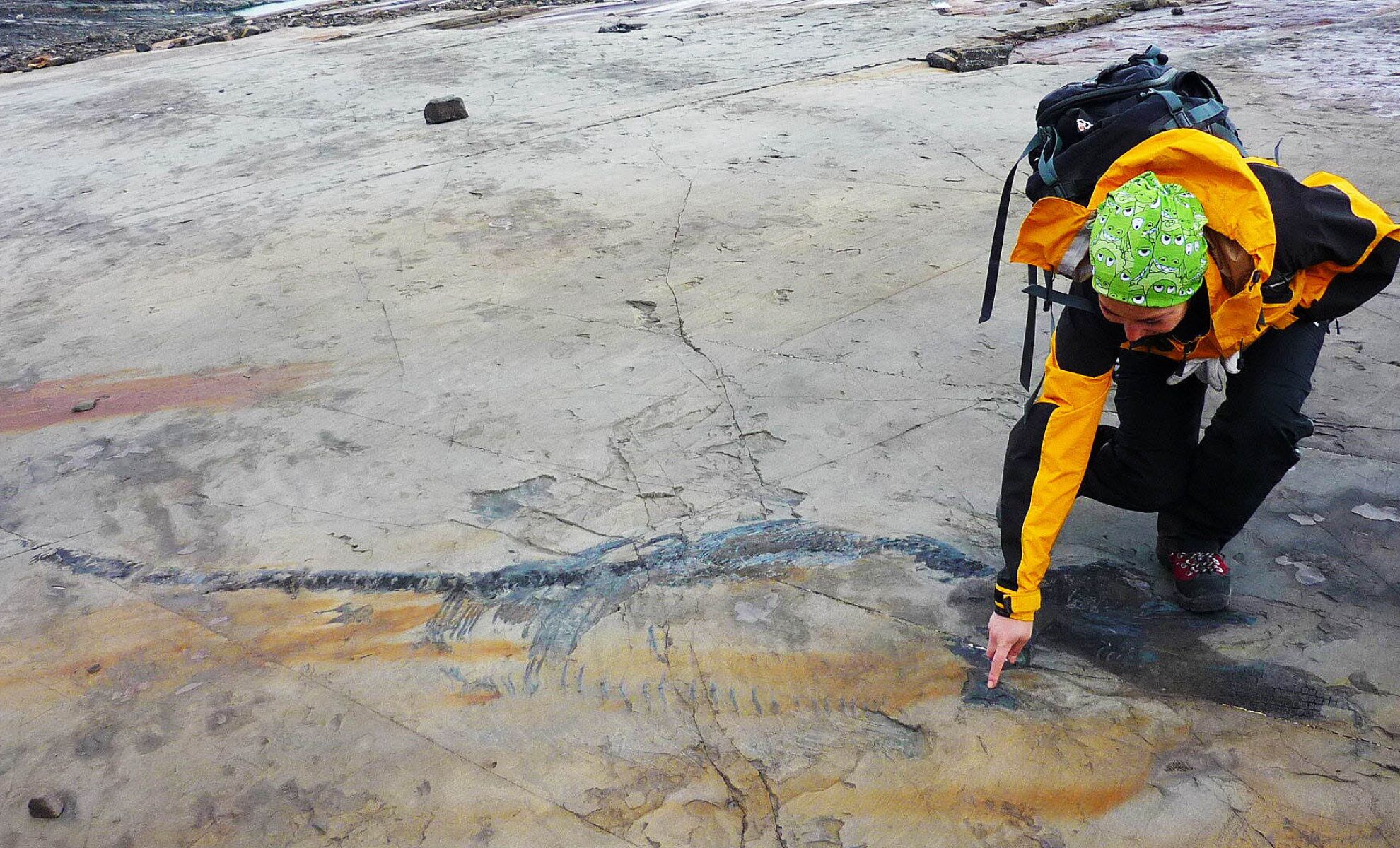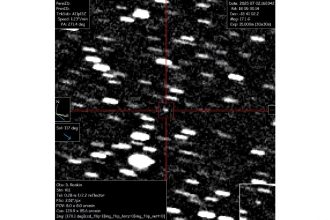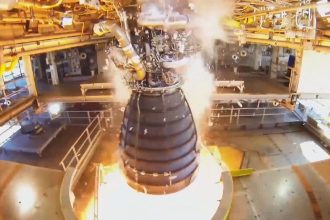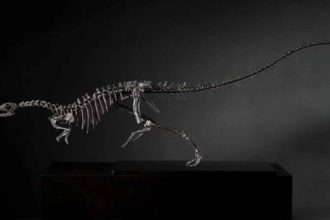In a significant breakthrough detailed in the Journal of Vertebrate Paleontology, researchers have revealed intricate details about an ancient marine reptile named Fiona, whose fossil dates back over 100 million years. This remarkable find, unearthed in the icy fields of Patagonia, provides a unique glimpse into the life of an ichthyosaur, a dominant predator of the prehistoric oceans. Excavated in 2023, Fiona’s fossil is not only extraordinarily preserved but also noteworthy for being the only known pregnant ichthyosaur fossil, thus offering invaluable insights into the biology, behavior, and environment of these extinct creatures.
Fiona stands out among ichthyosaur discoveries. Measuring around 11 feet (3.4 meters) in length, her nearly intact skeleton presents crucial details that illuminate the life of these ancient marine hunters. Particularly intriguing is the presence of an unborn fetus, preserved within her body as if poised to be born, which sheds light on the reproductive habits of these prehistoric reptiles.
The exceptional preservation of Fiona’s remains is attributed to a sudden underwater landslide that buried her under sand layers. Co-author Matt Malkowski, an assistant professor at The University of Texas at Austin’s Jackson School of Geosciences, remarked, “We were conducting our research with different objectives; they are very synergistic.” This fortuitous event preserved both Fiona and her fetus, creating a rare opportunity to study ancient life forms that survived catastrophic events.
Fiona’s fossil also provides crucial perspectives on the Early Cretaceous environment, especially in the Southern Hemisphere. At the time of her existence, Patagonia was undergoing geological transformations, with South America breaking apart from Africa. This separation likely influenced global climates and ocean currents, critical factors for marine ecosystems. According to Malkowski, “If you are the apex predator in the ocean at the time, these are all things you care about. You care about migration pathways. You care about places that you can hunt and fish and do your thing. You care about places where you can reproduce.” Such environmental shifts would have significantly impacted the behaviors and movement patterns of marine life, including apex predators like Fiona.
The discovery of Fiona’s fossil in this context is particularly important as it illustrates that ichthyosaurs, despite being top predators, had to adapt to a rapidly evolving environment. The changing landscapes and oceanic routes posed new challenges for migration, hunting, and reproduction. The near-complete skeleton of Fiona, complemented by her fossilized last meal of fish vertebrae, enables researchers to understand her adaptations to these transformations and the overall life cycle of marine reptiles during a time of significant global change.
Fiona’s pregnancy is a standout aspect of her fossil. As the only fully preserved pregnant ichthyosaur discovered in Chile, she offers distinct insights into the reproductive strategies of these ancient reptiles. Unlike many modern reptiles that lay eggs, Fiona’s fossil indicates that ichthyosaurs gave birth to live young, a trait observed in other advanced marine reptiles. Lead author Pardo-Pérez highlighted, “The discovery of the Fiona ichthyosaur provides valuable information regarding the species, its paleobiology, and paleoecology.” Her well-preserved fossil, along with the intact fetus, presents opportunities for further research on how these marine reptiles evolved to thrive in their ancient environments.
Additionally, Fiona’s fossil reveals signs of an injury she likely recovered from in life. The fusion of her fin bones suggests that she experienced a prior injury or infection that healed over time. This discovery enriches our understanding of marine reptile biology and the health history of these species. Since injuries and diseases in ancient reptiles are often challenging to study, Fiona’s fossil offers a significant opportunity to delve into paleopathology.
Pardo-Pérez added, “Moreover, its skeleton will allow us to delve deeper into aspects of its anatomy through new studies and the use of medical technology.” By employing advanced imaging techniques, including CT scanning, scientists aim to examine Fiona’s bones in greater detail, unlocking further insights into her physiology and any potential ailments she may have suffered. This progression signifies an exciting new avenue in the field of paleontology, where emerging technologies reveal previously hidden secrets about the life of ancient organisms.












